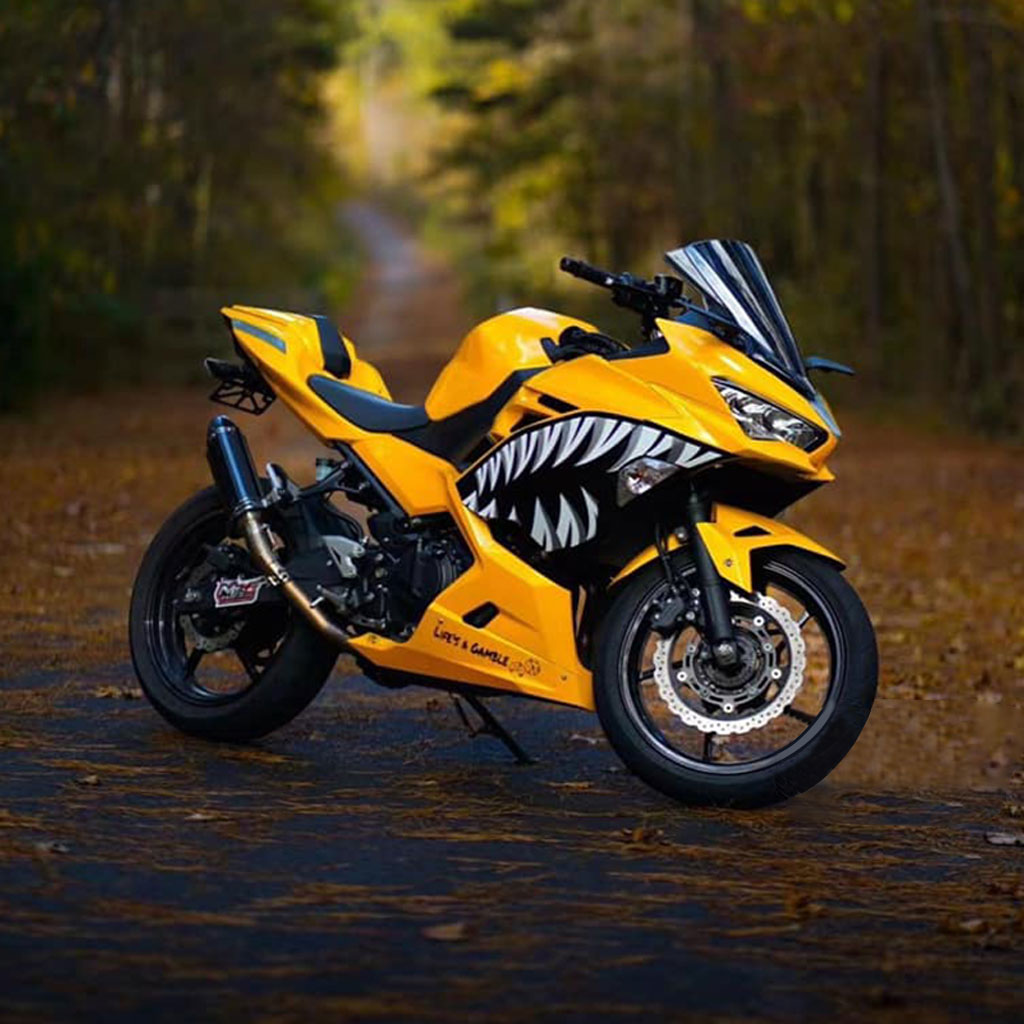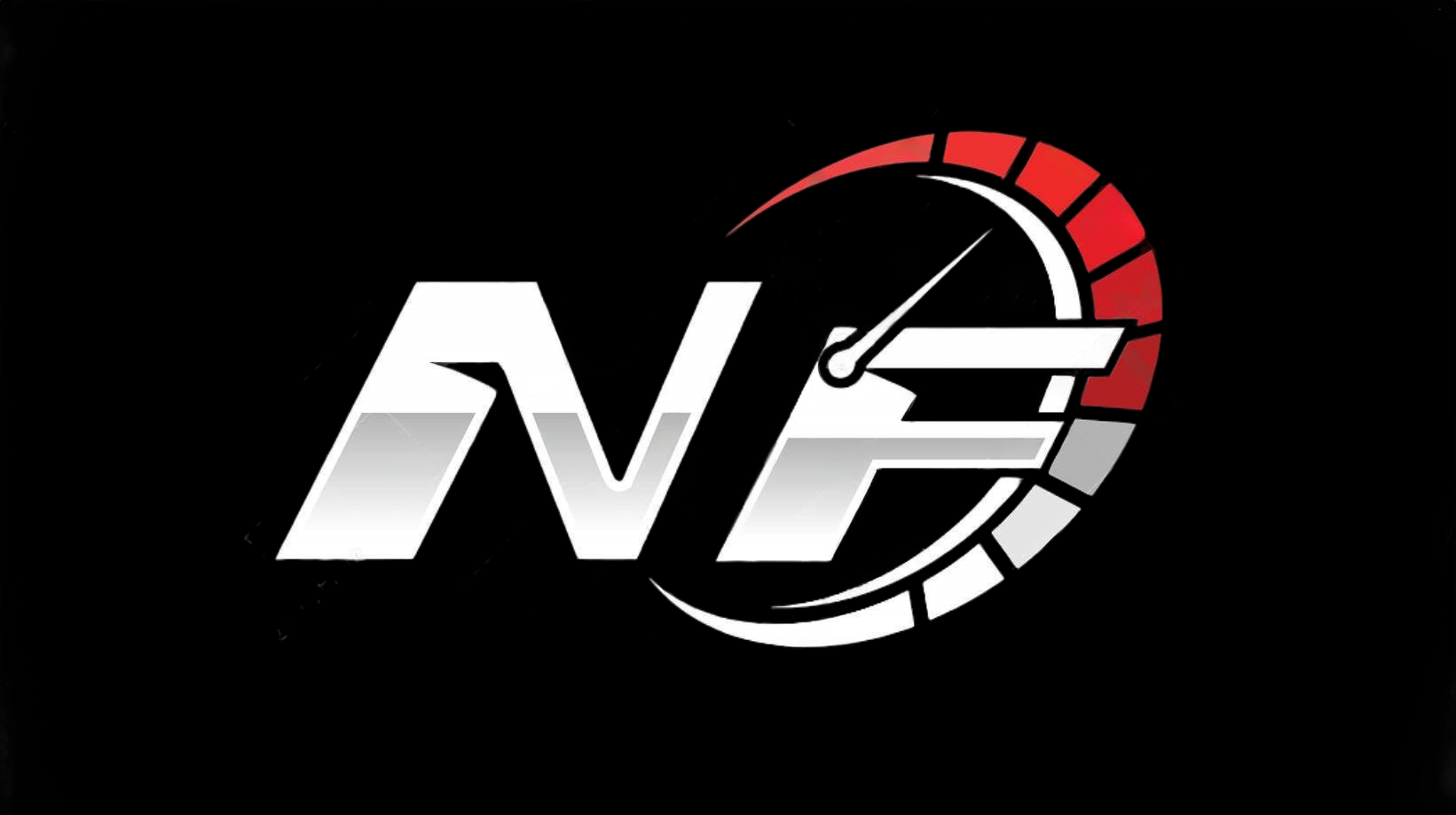From Classic to Modern Kawasaki Ninja Fairings with Spotlight on 2011
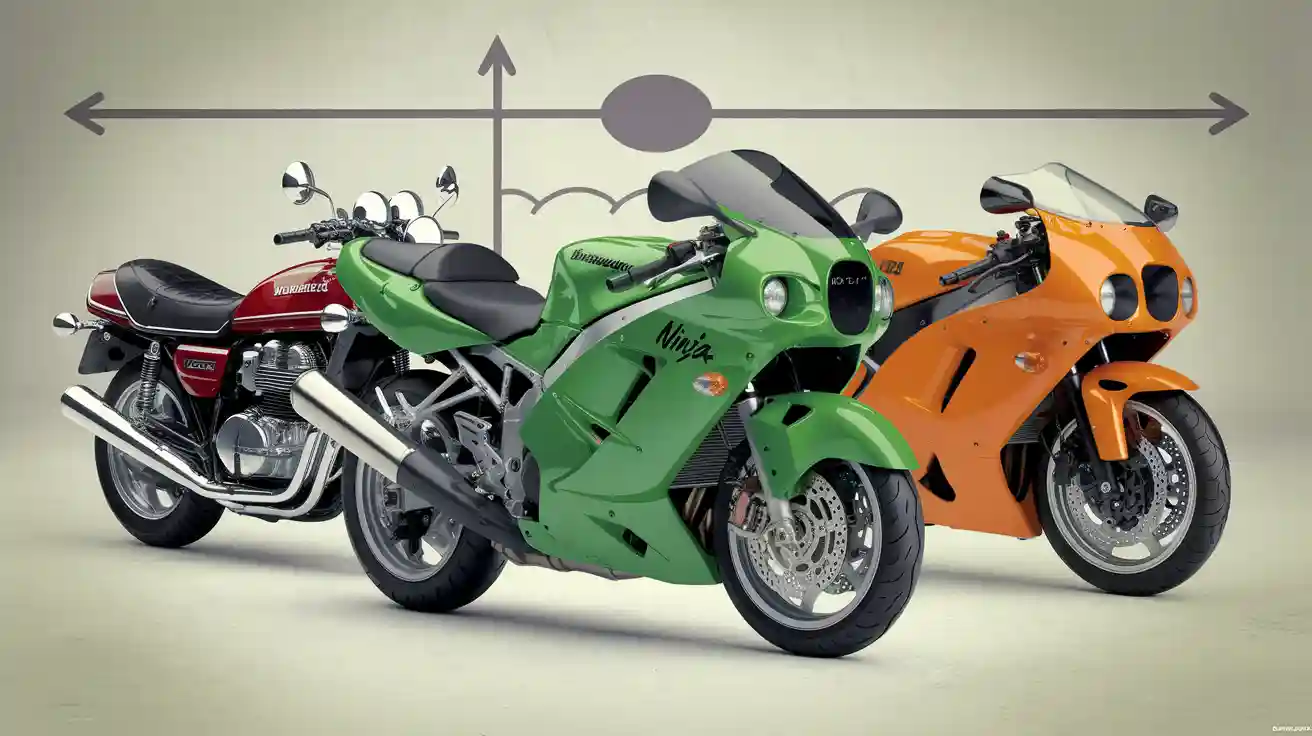
Kawasaki Ninja fairings began as simple panels built for function. Over time, Kawasaki engineers transformed the Ninja series with advanced fairing designs. The 2011 Kawasaki Ninja EX250R introduced bodywork that set it apart from earlier Ninja models. Designers reshaped the front cowl and mounted a flatter windscreen, which improved aerodynamic performance. This new fairing closely matched the look of larger Kawasaki Ninja supersport motorcycles. Riders found greater comfort with a forward-tilted seat and wide, raised handlebars. The 2011 Kawasaki Ninja EX250R marked a turning point for the Ninja 250R, blending modern styling, better wind protection, and enhanced performance.
Early Kawasaki Ninja Fairings
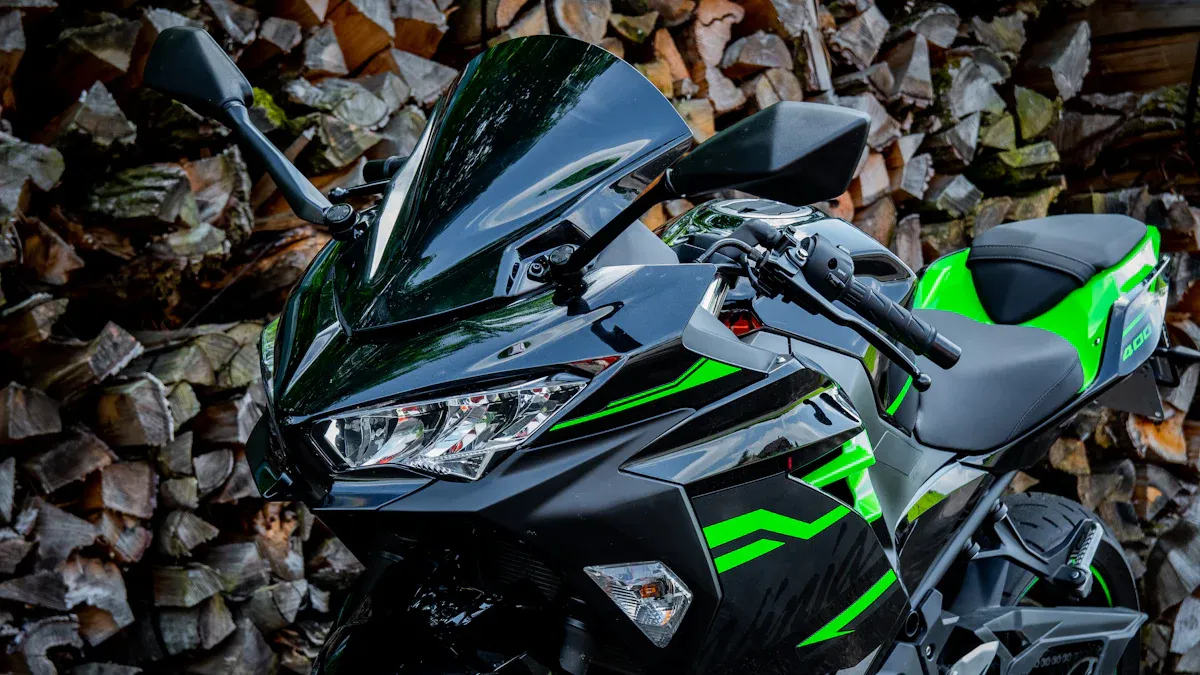
Classic Design and Purpose
The first Kawasaki Ninja motorcycles appeared in the 1980s. Engineers designed these bikes with a focus on speed and protection. The fairing on each early Kawasaki Ninja served as a shield for the rider. It helped block wind and debris during fast rides. Riders noticed that the full fairing also gave the Ninja a unique look. This design made the Kawasaki Ninja stand out from other motorcycles. The full fairing covered most of the engine and frame, which improved both safety and style. Many riders chose the Kawasaki Ninja because of its sporty appearance and the comfort the fairing provided.
Materials and Construction
Kawasaki used strong and lightweight materials for the Ninja fairing. Early models featured plastic and fiberglass panels. These materials kept the motorcycle light but sturdy. The full fairing panels attached securely to the frame. This construction method reduced vibration and noise for the rider. Kawasaki engineers paid close attention to how each fairing fit the Ninja’s body. They wanted every Kawasaki Ninja to have a smooth surface. This careful construction helped the Ninja maintain its speed and stability. Riders trusted the durability of the full fairing, even after long rides.
Initial Aerodynamic Concepts
Aerodynamics played a key role in the first Kawasaki Ninja fairing designs. Engineers studied how air moved around the motorcycle at high speeds. They shaped the fairing to cut through the wind and reduce drag. The table below shows some important features and their aerodynamic benefits:
| Design Feature | Aerodynamic Principle / Engineering Justification | Supporting Engineering Data / Outcome |
|---|---|---|
| Snorkel opening in front fairing | Channels cold air into a large, airtight 15-liter airbox implementing a Ram Air system inspired by Formula One racing | Ram Air pressurizes airbox at speed, increasing engine power by forcing more air into induction |
| Ram Air system | Uses speed-dependent air pressure to boost engine power, enhancing top speed and horsepower | ZX-11 produces up to 147 bhp at 10,500 rpm; top speed of 175 MPH |
| Engine tilted forward 2 degrees | Accommodates large airbox and snorkel; improves center of gravity and handling | Engine tilted 17 degrees from vertical; improved front-end weight distribution |
| Slippery bodywork | Designed by aerodynamic experts to reduce drag and optimize performance | Contributes to high top speed and efficient airflow management |
Kawasaki Ninja engineers added features like the Ram Air system and a forward-tilted engine. These changes improved both power and handling. The full fairing design helped the Ninja reach higher speeds while keeping the rider comfortable. Kawasaki continued to refine these aerodynamic ideas in later Ninja models.
Milestones in Kawasaki Ninja Fairing Evolution
Technological Advancements
Kawasaki Ninja fairings have seen many changes over the years. Engineers focused on making each ninja model faster and more stable. They improved aerodynamic efficiency to reduce drag and boost performance. Some ninja models now use winglets and special bodywork to guide air around the bike. The Ninja H2 stands out with active aerodynamics that adjust as speed changes. This technology helps the ninja stay steady at high speeds and gives riders more control. These upgrades appear in technical documents and expert reviews, showing how each new ninja generation brings better performance and comfort.
- Kawasaki Ninja fairings now use advanced aerodynamic shapes.
- Winglets and airflow channels help the ninja cut through the wind.
- The Ninja H2 uses active aerodynamics for top performance.
- Each new ninja model improves stability and rider experience.
Aesthetic Changes Over Generations
The look of the Kawasaki Ninja has changed a lot. Early ninja bikes had simple full fairing panels. Newer models use ABS plastic, which is light and strong. Designers chose bold colors like yellow and black for a sporty look. Sharp lines and aerodynamic profiles make the ninja look fast even when standing still. The table below shows how ninja fairing features have evolved:
| Feature | Specification | Benefit |
|---|---|---|
| Material | ABS Plastic | Lightweight, durable, UV-resistant |
| Color Scheme | Yellow & Black | High-visibility, aggressive sport design |
| Design | Aerodynamic profile with sharp lines | Reduces drag by 15% compared to standard fairings |
| Customization | Adjustable color schemes and material thickness | Enhanced durability and tailored aesthetics |
| Aerodynamic Efficiency (Pro model) | CFD optimized shape | Up to 30% drag reduction |
| Precision Fit | 3D-scanned compatibility | 99% match with ZX6R models |
The 2025 Kawasaki Ninja 1100SX ABS shows how ninja fairings now blend aggressive style with comfort. Modern ninja bikes use LED lights and adjustable windscreens. These changes make the ninja both stylish and practical for riders.
Influence of Racing and Performance
Racing has shaped the Kawasaki Ninja fairing from the start. Teams like Puccetti Racing and the Kawasaki Racing Team test ninja bikes at famous tracks such as Jerez, Portimao, and Phillip Island. Riders like Garrett Gerloff and Alex Lowes give feedback to improve ninja performance. These tests help engineers create better fairings for both racing and street ninja models. The supersport-inspired fairing on many ninja bikes comes from lessons learned in racing. Each ninja model aims to be a high-performance motorcycle with strong engine specs and a full fairing for speed and safety. Racing keeps pushing the ninja to new levels as a top sports motorcycle.
2011 Kawasaki Ninja EX250R Fairings
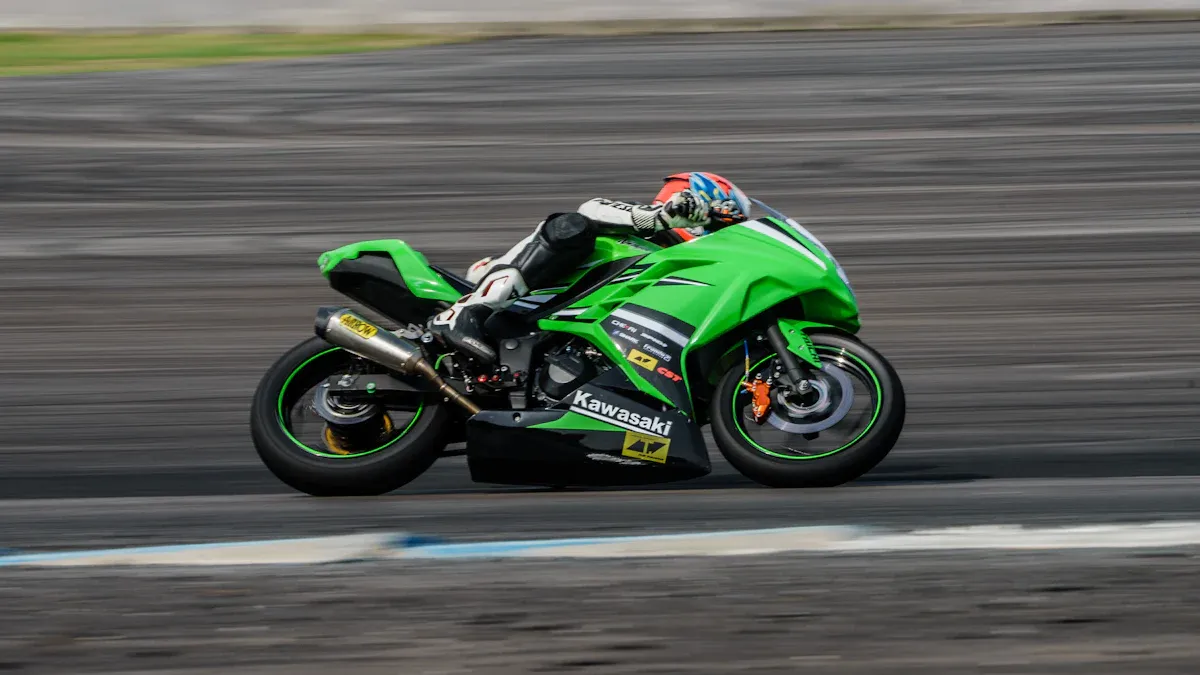
Aerodynamic Enhancements
Kawasaki engineers redesigned the fairing on the 2011 kawasaki ninja ex250r to improve performance and rider experience. The ninja features a full fairing that wraps around the front and sides of the motorcycle. This design helps the ninja cut through the air with less resistance. The fairing uses sharp lines and smooth curves to guide airflow over the ninja. Riders notice better stability at high speeds because the fairing reduces drag. The ninja windscreen sits flatter than before, which directs wind away from the rider’s chest and helmet. This change increases comfort and lowers fatigue during long rides. The ninja’s aerodynamic bodywork also helps the 250r maintain speed on highways and twisty roads. Kawasaki focused on making the ninja fairing both stylish and functional, so riders get the best performance from their sports motorcycle.
Material Upgrades and Durability
Kawasaki chose advanced materials for the ninja fairing in 2011. The fairing panels use high-quality ABS virgin thermoplastic. This material gives the ninja a tough shell that resists cracks and fading. Injection molding creates a precise fit for every ninja panel. Riders see fewer gaps and better alignment on the ninja bodywork. The fairing finish includes six layers of paint and clear coat, which protects the ninja from scratches and sun damage. Kawasaki added a heat shield to the ninja fairing, so the panels stay cool even after long rides. The ninja fairing comes with a 180-day warranty against peeling, lifting, and bubbling. Riders trust the ninja to look good and stay strong for years. The full fairing design also shields the engine and frame, which keeps the ninja running smoothly. Many ninja owners choose aftermarket fairings with similar materials and finishes. These upgrades show that ninja riders want both durability and style for their sports motorcycle.
Tip: Riders can extend the life of their ninja fairing by cleaning it regularly and checking for loose bolts.
Modern Styling Features
The 2011 kawasaki ninja ex250r stands out with bold styling. Kawasaki designers gave the ninja a look that matches larger supersport models. The fairing uses sharp angles and aggressive lines to make the ninja appear fast even when parked. The ninja features pre-installed decals under a clear coat, which adds color and personality. Riders can customize the ninja fairing with different paint and decal options at no extra cost. The ninja comes with a free windscreen, tank pad, and universal bolts, making upgrades easy. Some ninja owners add a full tank cover or rear seat cover for extra protection and style. The ninja fairing fits models from 2008 to 2012, so many riders enjoy these features. The table below shows popular aftermarket modifications for the ninja fairing:
| Feature/Modification | Description |
|---|---|
| Compatibility | Fits 2008 to 2012 Kawasaki Ninja 250R (EX250R) |
| Material | High-quality ABS virgin thermoplastic |
| Craftsmanship | Injection molding with show-quality finish |
| Decals | Pre-installed under clear coat, with customization options at no extra cost |
| Paint Finish | Six layers of paint and clear coat for a show-quality appearance |
| Included Free Parts | Windscreen, tank pad, heat shield, universal bolts |
| Additional Options | Full tank cover available at extra cost, rear seat cover included |
| Warranty | 180-day warranty against peeling, lifting, fading, cracking, bubbling |
| Customization | Paint and decals can be customized without extra cost |
Ninja riders prefer fairings that combine OEM quality with personal touches. The ninja fairing offers both protection and a chance for individual expression. Kawasaki continues to set trends in sports motorcycle design with the ninja series. The 2011 ninja fairing blends modern looks, strong materials, and aerodynamic features for top performance.
Comparison to Previous Kawasaki Ninja 250R Models
The 2011 kawasaki ninja ex250r brought many changes when compared to earlier versions of the kawasaki ninja 250r. Riders noticed these updates right away. The new ninja fairing looked sharper and more modern. Engineers at kawasaki wanted the ninja to stand out on the road and track. They studied how air moved around the ninja and made the fairing more aerodynamic. This helped the ninja move faster and use less energy at high speeds.
Design Differences
Older kawasaki ninja models used rounder shapes and softer lines. The ninja fairing on these bikes covered the engine but did not guide air as well. The 2011 ninja fairing used sharper angles and a flatter windscreen. This gave the ninja a look similar to bigger kawasaki ninja bikes. Riders liked the new ninja style because it made the bike look fast even when parked.
| Feature | Previous Ninja 250R Models | 2011 Kawasaki Ninja EX250R |
|---|---|---|
| Fairing Shape | Rounded, less aggressive | Sharp, angular, aggressive |
| Windscreen | More upright | Flatter, better wind deflection |
| Decals | Simple, fewer options | Pre-installed, customizable |
| Paint Finish | Basic, fewer layers | Six-layer, show-quality finish |
| Compatibility | Limited to specific years | Fits 2008-2012 ninja models |
Material and Build Quality
Kawasaki improved the ninja fairing materials in 2011. Earlier ninja models used basic plastics. The new ninja fairing used ABS virgin thermoplastic. This made the ninja fairing stronger and more resistant to cracks. Injection molding gave each ninja panel a perfect fit. The paint on the ninja fairing also lasted longer. Riders found that the ninja fairing stayed bright and shiny after many rides.
Aerodynamics and Performance
The ninja fairing on older models helped with wind protection, but the 2011 ninja fairing did more. Engineers shaped the ninja fairing to cut through the air. This reduced drag and made the ninja more stable at high speeds. The ninja windscreen also kept wind off the rider’s chest. Riders felt less tired after long rides on the ninja. The new ninja fairing helped the 250r keep up with bigger bikes in terms of performance.
Comfort and Rider Experience
Kawasaki listened to ninja riders when designing the 2011 ninja fairing. The seat on the ninja tilted forward, and the handlebars sat higher. This gave ninja riders a more comfortable position. The ninja fairing blocked more wind and kept the rider warmer on cold days. Many riders said the ninja felt easier to control and more fun to ride.
Customization and Aftermarket Options
The 2011 ninja fairing allowed for more customization. Riders could choose different decals and paint for their ninja. The ninja fairing came with a free windscreen and tank pad. Some ninja owners added tank covers or rear seat covers. These options made the ninja unique for each rider.
Note: Riders who want to upgrade their ninja fairing should check for compatibility with their model year.
Market Response
The new ninja fairing made the 2011 kawasaki ninja ex250r very popular. Many riders traded in older ninja bikes for the new model. The ninja fairing improvements set a new standard for small sport bikes. Other brands tried to match the ninja in style and performance. The ninja became a top choice for new riders and experienced bikers alike.
Summary Table
| Aspect | Older Ninja 250R | 2011 Ninja EX250R |
|---|---|---|
| Fairing Design | Simple, rounded | Aggressive, aerodynamic |
| Material | Basic plastic | ABS virgin thermoplastic |
| Paint/Finish | Standard | Six-layer, show-quality |
| Aerodynamics | Basic | Advanced, reduced drag |
| Comfort | Standard seat/controls | Forward-tilted seat, raised bars |
| Customization | Limited | Many options, free accessories |
| Performance | Good for class | Improved stability and speed |
The 2011 ninja fairing changed how riders saw the kawasaki ninja. The new ninja fairing made the bike look and feel modern. Riders enjoyed better performance, comfort, and style. The ninja series continued to lead the way in sportbike design.
Impact of 2011 Kawasaki Ninja EX250R Fairing Improvements
Improved Performance and Handling
The 2011 kawasaki ninja EX250R fairing brought a new level of performance to this sports motorcycle. Riders noticed that the ninja felt more stable and confident in fast corners. Professional reviews compared the kawasaki ninja to the Honda CBR250R. The ninja showed better handling, especially during canyon riding. The fairing worked with the chassis and suspension to improve aerodynamic stability. This helped the ninja stay precise and controlled during aggressive riding. The ninja’s fairing reduced drag, which allowed the bike to maintain speed and respond quickly to rider input. The improved performance made the kawasaki ninja a favorite for riders who wanted a reliable and sporty motorcycle.
Enhanced Comfort and Wind Protection
The kawasaki ninja EX250R fairing design improved comfort for many riders. The new fairing removed old styling and matched the look of larger ninja models. This change gave the ninja better aerodynamics and wind protection. Riders found the new windshield provided a pleasant surprise by blocking more wind. The ninja’s raised handlebar and higher seat position helped riders sit upright. This made long rides more comfortable. The seat height increased by 1.2 inches, but most riders could still reach the ground easily. The ninja’s suspension upgrades, including a 37mm Showa fork and adjustable KYB rear shock, made the ride smoother. Some taller riders felt the footpeg position was cramped, but the ninja’s ergonomics fit most beginners well.
- The ninja fairing improved wind protection for entry-level riders.
- The new seat and handlebar positions increased comfort.
- Suspension upgrades made the ninja ride smoother.
Visual Appeal and Market Response
The 2011 kawasaki ninja EX250R fairing gave the bike a bold and modern look. The sharp lines and aggressive angles made the ninja stand out among other sports motorcycles. The fairing matched the style of larger kawasaki ninja models, which attracted new riders. Many people liked the customizable decals and show-quality paint finish. The ninja’s visual appeal helped boost sales and made it a top choice for beginners and experienced riders. The market responded well to the new fairing, and other brands tried to match the ninja’s style and performance. The kawasaki ninja continued to lead the way in sports motorcycle design.
| Feature | Market Impact |
|---|---|
| Modern fairing design | Increased sales and popularity |
| Customization options | Attracted new riders |
| Aggressive styling | Set trends in motorcycle design |
Tip: Riders who want a stylish and high-performance sports motorcycle often choose the kawasaki ninja for its fairing and overall design.
The evolution of kawasaki ninja fairings shows how technology and bold design shape the sportbike world. The 2011 kawasaki ninja EX250R set a new standard for performance, comfort, and style. Riders saw the ninja become more advanced with each model. Kawasaki ninja engineers introduced features like a lighter frame, improved suspension, and better rider ergonomics. The ninja 400 brought a compact clutch and sharper handling. The 2020 ninja Z H2 added a supercharged engine and advanced electronics. The ninja H2 SX used high-performance tires and rider assistance systems. Each kawasaki ninja model builds on the last, keeping the ninja series at the front of sportbike innovation. Riders trust the ninja for its speed, safety, and modern design. The kawasaki ninja story continues as new models push the limits of what a sportbike can do.
Riders who choose a kawasaki ninja experience the results of decades of progress and passion for motorcycles.
FAQ
What materials do Kawasaki Ninja fairings use?
Kawasaki uses ABS virgin thermoplastic for most Ninja fairings. This material resists cracks and fading. Riders trust ABS for its strength and lightweight properties.
How does the 2011 Ninja EX250R fairing improve aerodynamics?
Engineers shaped the 2011 Ninja EX250R fairing with sharp lines and a flatter windscreen. These changes guide airflow over the bike. Riders experience less drag and better stability.
Can riders customize their Ninja fairings?
Many riders choose custom decals and paint for their Ninja fairings. Kawasaki offers pre-installed decals under a clear coat. Owners can select different colors and designs.
Tip: Riders should check compatibility before buying aftermarket fairings.
What is the difference between older Ninja 250R and 2011 EX250R fairings?
| Feature | Older Ninja 250R | 2011 EX250R |
|---|---|---|
| Shape | Rounded | Sharp, angular |
| Material | Basic plastic | ABS thermoplastic |
| Wind Protection | Standard | Improved |
See Also
Ultimate Guide To Aftermarket Fairings For Ninja 400
Comprehensive Review Of The Best ZX6R Aftermarket Fairings
Best Five Ninja 400 Fairing Styles To Watch In 2025
Most Popular Fairing Kits For Kawasaki Ninja 300 Riders
Detailed Analysis Of Ninja 650 Fairing Performance By Kawasaki
